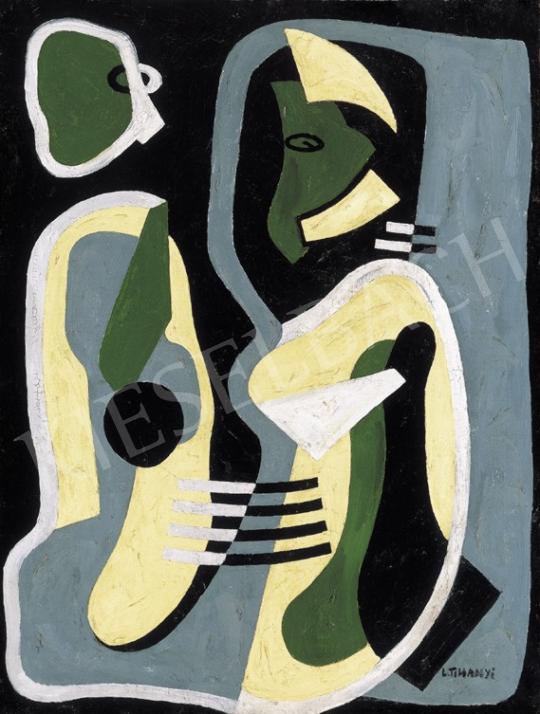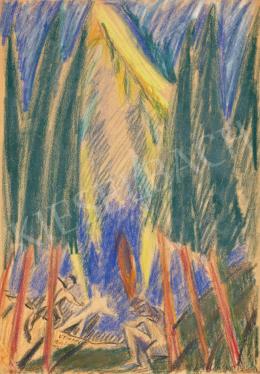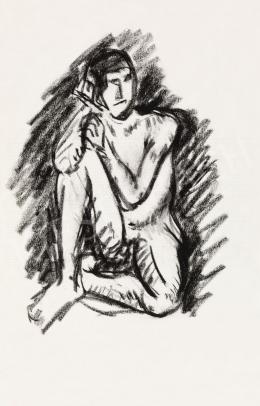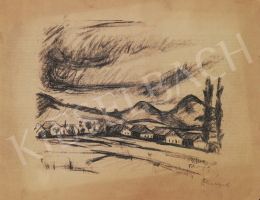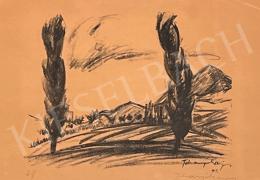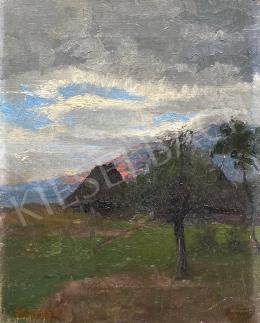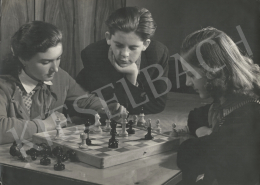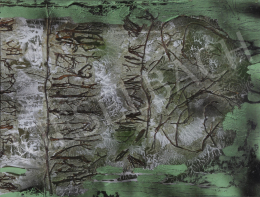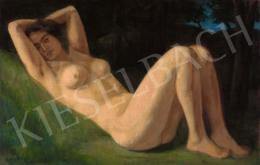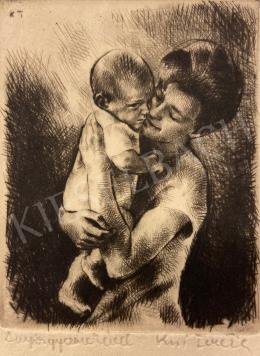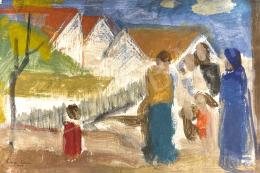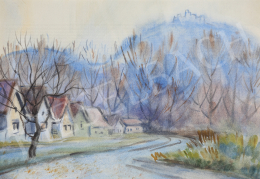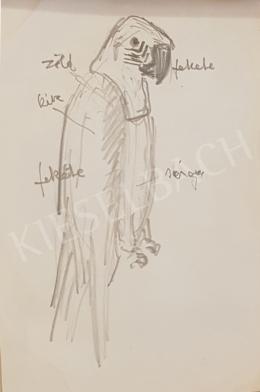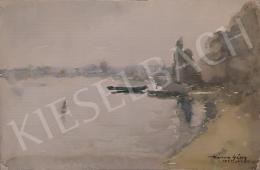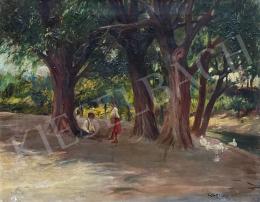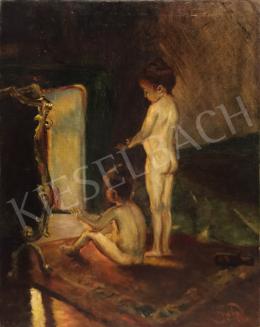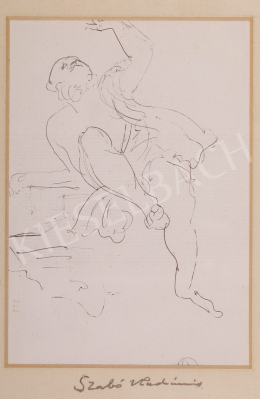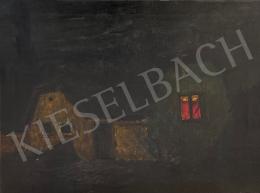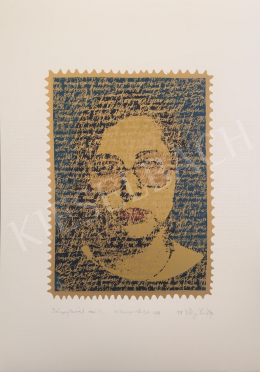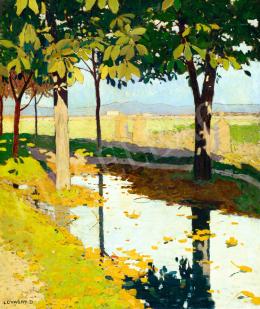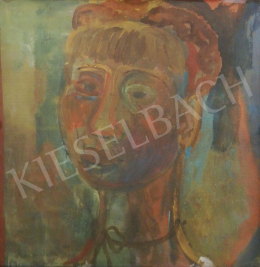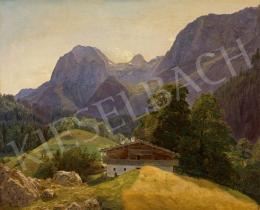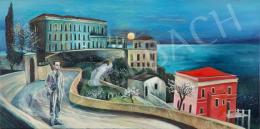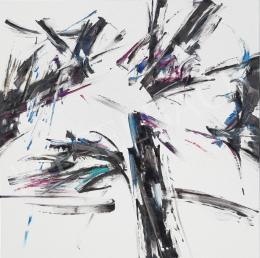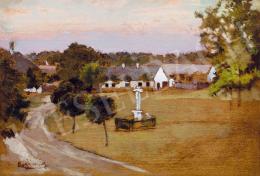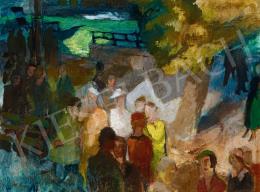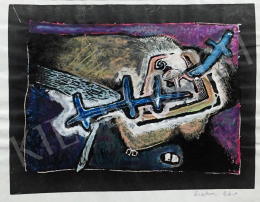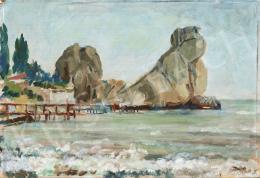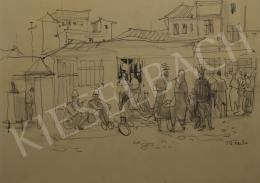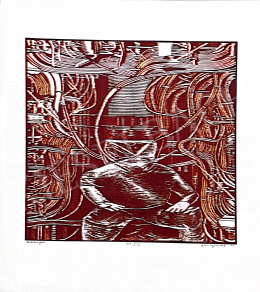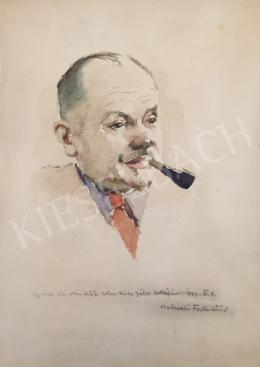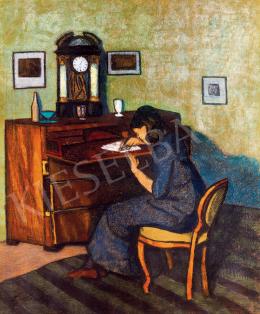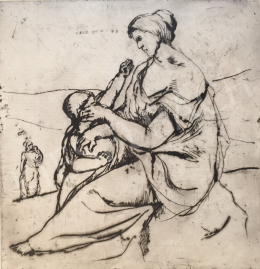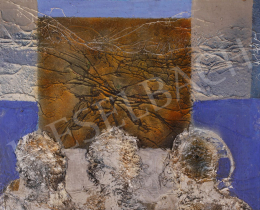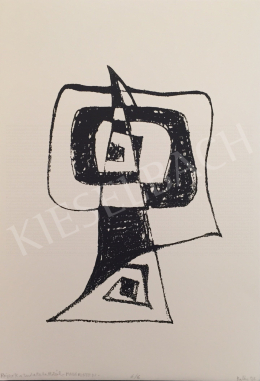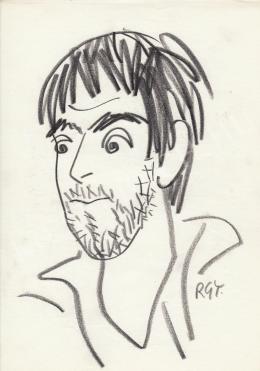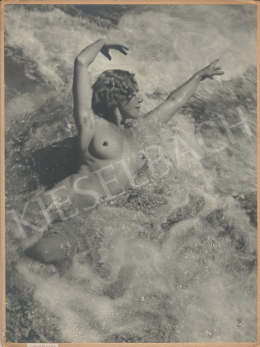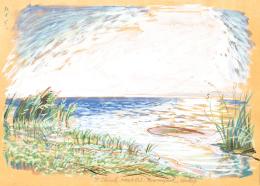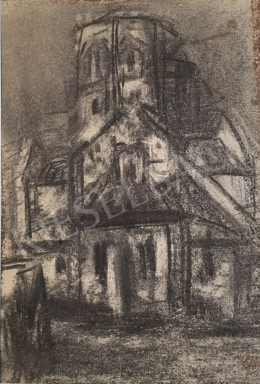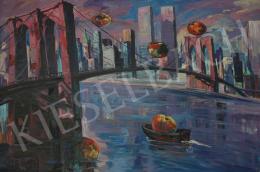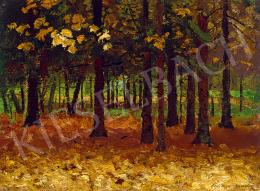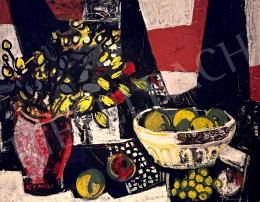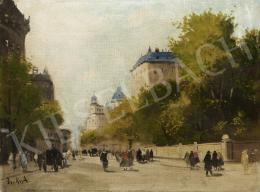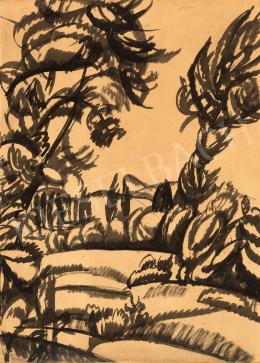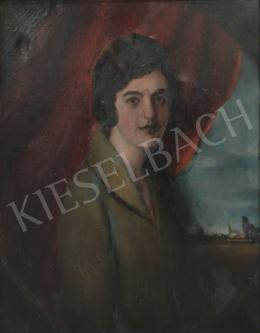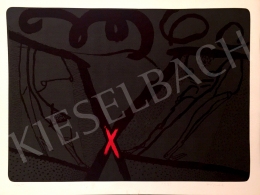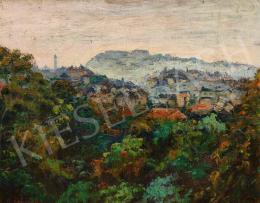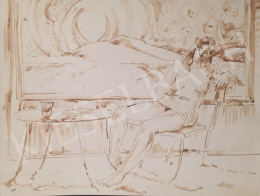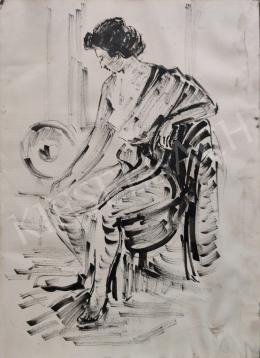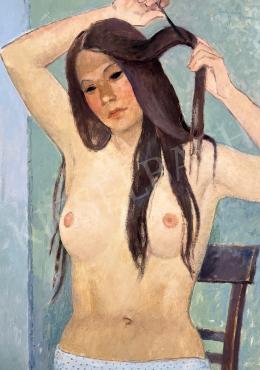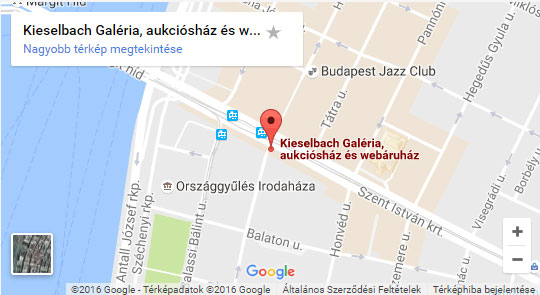Lajos Tihanyi, who belonged to the famous circle Nyolcak (The Eight), was forced into emigration in 1919 because of the fall of The Hungarian Soviet Republic. He spent ten months in Vienna and then went to Berlin, where he lived for several years. In 1924 he settled in Paris; he never returned to Hungary in spite of the amnesty in 1926.
When he left Budapest, he had already been an acknowledged artist with a huge oeuvre. However, he was a young man at that time, so most of his works were born abroad in the years of emigration.
Tihanyi's art in the 1920s and 1930s was quite extraordinary among the Hungarian trends of that era. Works with a similar aspect appeared in Hungary only in the 1960s, represented by the pictures of the so-called European School.
When looking for analogies of Tihanyi's picture presented here, it is essential to think of Picasso's name. The famous artist's Sitting Woman from 1927 must be mentioned here, just as his Painter and His Model, and the Bust of a Woman with a Self-portrait from 1928 and 1929. From Tihanyi's notes it is known that the two artists knew each other personally; the Hungarian painter wrote about his Spanish contemporary's art several times in his letters. It is also presumable that Picasso visited Tihanyi's one-man exhibition in the Galerie Sacre du Printemps in Paris, in 1925.
From the second half of the 1920s, abstract art got an increasing importance in the French capital; it was not possible to be left untouched by the effects of the new trend any more. Tihanyi, in his documents left behind, mentioned several names: Arp, Brancusi, Gleizes's names appear among others. There could be mentioned a lot of analogies among the works created by the contemporaries in connection with Tihanyi's works; today it is impossible to find out who painted one or the other motif first, or who influenced whom. The analogies serve as evidences of the fact that these artists all were able to feel the 'fresh air' of the era and recorded their experiences in a new way of expression. Tihanyi painted just as up-to-date pictures as those who belonged to the Abstraction Creation, or those who were oriented towards Surrealism. Of course, there were painters who only wanted to follow the then fashionable trends, but Tihanyi was not one among them. His works painted at that time create an organic continuation with his earlier art, as it is also justified by the picture under discussion.
In the 1910s Tihanyi began a series to which the work presented here also belongs. In the first piece two heads can be seen, the figure with long hair on the left is holding a book. Tihanyi had not touched this theme again for a long time, but the two figures can be discovered again in an oil painting, Couple Talking, from 1928. Of course, Tihanyi did not paint in the same way in the 1920s as in the 1910s, so the figures of Couple Talking are moved away from each other. However, the chin of the figure on the left, its nose, high forehead, shoulder and hand can clearly be recognised. The other figure is more difficult to identify, but its nose, forehead and the curve of the hair following the head all correspond to those of the right-hand figure in the earlier drawing.
In Couple Talking the viewer can already discover the stylistic marks which appear in the Composition, like the pattern of lines, the great, light forms and contouring. The same stylistic marks can be observed in more of Tihanyi's oil paintings. His Abstract Painting, Woman in Yellow Dress with a Grey Background and Carmen, which came from the artist's estate and now owned by the Hungarian National Gallery, were made in 1927 and '28. The figures in these pictures are strongly stylised. All the pictures are dominated by great, light, mainly round forms, the contouring and a structure based on the contrast of light and black bulks. The pattern of lines appear in all the three paintings. In two of the pictures there is only one figure, but in the third one two figures appear, a standing and a sitting one. These two figures could also be taken as the same from Couple Talking, as the hand in the centre of the picture is easily recognisable.
The Composition is akin not only to the pictures discussed above, but also to the gauche Composition with Two Figures, which can be found in the Hungarian National Gallery. In this gauche two standing figures appear, facing each other. The one on the left, just as the left-hand figure of the Composition, is holding its right hand to the other. Though the geometrical stylisation of the two pictures is different, it is easily recognisable that the same figures serve as starting points. The contoured eyes can be observed in both pictures and there are similar characteristics of the heads of the right-hand figures; with the help of the gouache the two light geometrical forms of the head is easily unweavable. In the gouache, the pattern of lines appears also on the hands.
The stylising parts discussed above are characteristics of almost all the painters working in Paris at that time. This fact is almost independent of the years of the birth of the artists, as similar features can appear in 1925 just as in 1937. Despite the almost ten years between the dates of their painting, the relationship of Tihanyi's Composition to Picasso's Guernica is conspicuous. Both pictures are characterised by a monochrome world of colors. Tihanyi's essays on art prove how important can even one characteristic like this be in a case of a picture.
It is also an important question what the picture represents. The figures talking to each other can carry a symbolical meaning; this suggestion is also confirmed by the appear of a book and the choosing of the figures wearing strange clothes. Though the question has not been answered so far, it is evident that the theme was quite important for the artist, as he had reached back to it several times.
Dr Valéria Vanília Majoros






